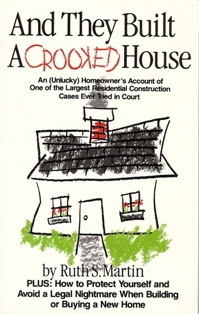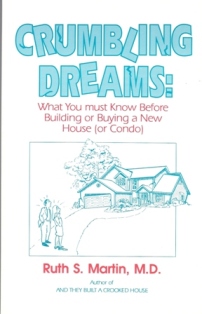Below is the Original Bibliography, as published in 1993. While many of the books are dated,
several definitely worth reading are shown with their covers and linked directly
to amazon.com.
Bibliography: An annotated listing of books to help
you build or buy a well-constructed new house (or condo)
My husband and I examined well over 100 consumer-oriented
books about how to buy, build, design, inspect, contract for and otherwise
acquire a new house or condominium. Very few of these books discuss
the risks and consequences of defective construction. Still, we can
recommend many books for the information they provide on practically
all other aspects of home building and buying.
This bibliography was originally prepared for the 1993 print edition of Crumbling
Dreams. All the books should still be in print or else available
in newer editions. I suggest you peruse any large bookstore for these titles, or
click on Amazon.Com -- which takes you to
the world's largest on-line book store. Once connected to the Amazon.com web site,
search for any of these books by title or author.
I don't recommend you build any house "by the book." However, the
more you know, the more right questions you can ask. All of the listed
books have something useful to offer. The best books for you will depend
on your route to a new home building it yourself, hiring someone to
build it, buying it new, or purchasing a used or renovated house.
* * *
I have listed the books under two broad categories:
A third category of books -- Business and Law in America -- has
nothing to do with houses per se, but everything to do with business
ethics in America. Notice how often words like "greed," "thieves"
and "liars" end up in the title of books in this category.
DESIGN AND CONSTRUCTION OF A HOUSE YOU PLAN TO BUILD
OR HAVE BUILT FOR YOU
|

